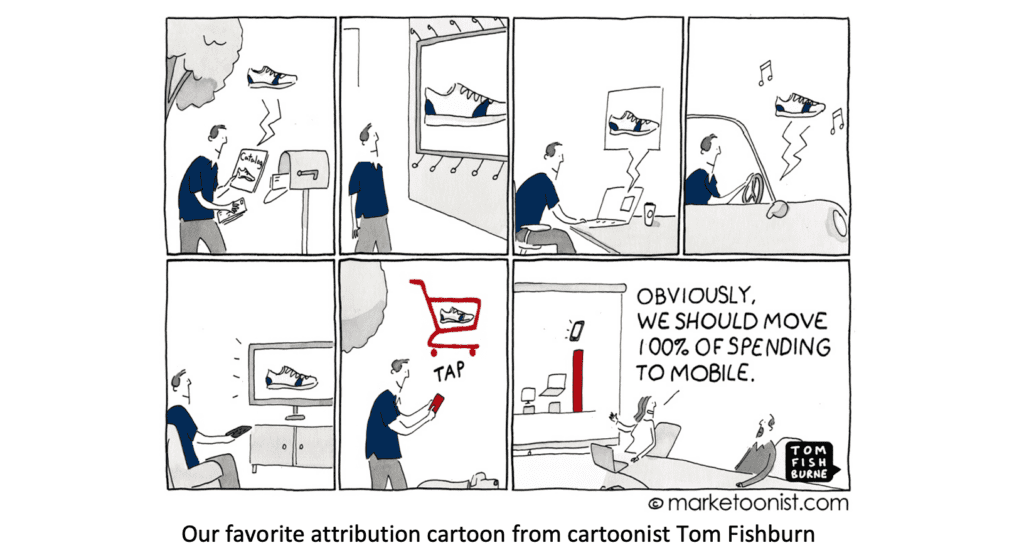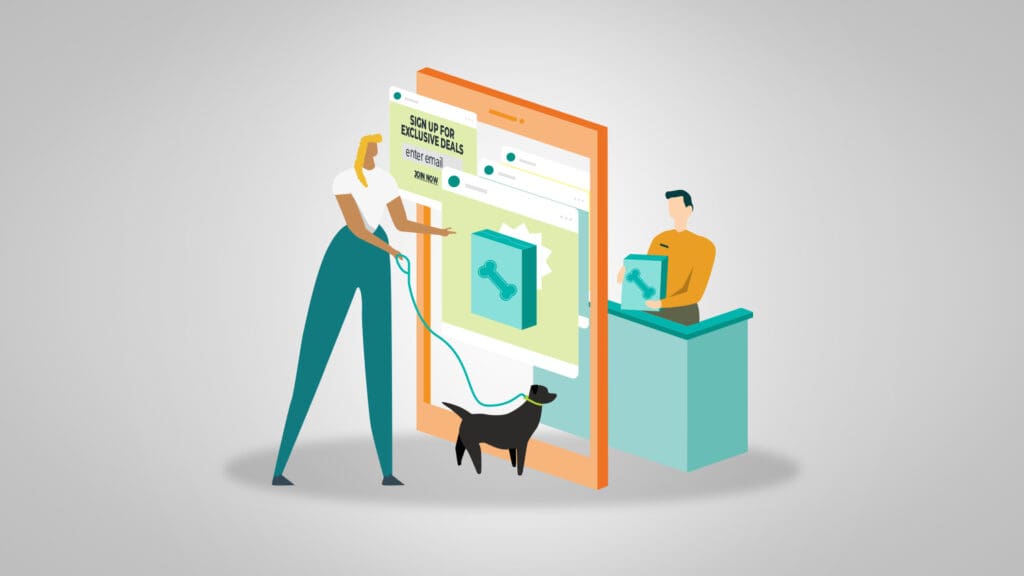
Targeting Gone Wild: 3 Targeted Marketing Strategy Mistakes Hurting Your Media Campaigns
When it comes to media, understanding a consumer target can ultimately mean the difference between success and failure. Understanding who your ideal consumer is, how they use media, how they spend their time, what their interests are, how they behave, and what they believe all help build a picture of who is most likely to use your product or service. This information is not only valuable in developing messaging but also in determining the best media to get it in front of those most likely to buy. While measuring your targeted marketing results like clicks and impressions is important, at the end of the day, your media plan is not about that top-funnel data; it’s about sales and your return on investment.
In an effort to be more efficient and more effective, today’s advertisers are pushing to get more targeted by eliminating “waste” and driving results. While this pertains to all media, the biggest and most exciting benefit of digital media is you can reach, as the old saying goes, “the right person at the right time with the right message.” It seems simple, right? “The more targeted, the better” seems to be the new motto. But what happens when you take that too far? Or when your campaign doesn’t work, despite being 100% honed in on the “ideal” target audience.
In today’s edition of Plain Talk, we’ll examine three major targeted marketing strategy mistakes we see and discuss how you can avoid similar pitfalls in your campaigns.
- Mistake #1: Focusing on the Wrong Insights
- Mistake #2: You’re Too Focused On The Perfect Target
- Mistake #3: You’re Not Focused on the Long-Term or Big Picture
- Get Expert Help With Your Targeted Marketing Strategy
Mistake #1: Focusing on the Wrong Insights
Data-driven insights should drive the majority of your business decisions, including advertising and marketing. But media involves just as much art as it does science. There are very real numbers that are useful in determining strategy or targeting and audience. But what you do with those numbers matters most.
We once saw a stat from a vendor about the type of target audience a professional NFL team would reach. The vendor was trying to sell me a sponsorship, ensuring it was the perfect fit for my client. The stat? That the fans of this specific NFL team were more likely than the average population to be…(drumroll)…football fans. Not only was this stat irrelevant to the advertiser’s business, but it was a total “duh” moment, and it offered nothing useful in helping the client achieve their goals. Focusing on the wrong metrics or insights ensures that you will waste time, effort, and money while you struggle to reach your business goals.
Watch out for these three stumbling blocks:
1. Confirmation bias
In his MasterClass on Scientific Thinking and Communication, Neil deGrasse Tyson says, “We all have susceptibility to bias. Search engines on the internet are the epitome of confirmation bias.” Search engines and social platforms have all worked hard to perfect algorithms. They will spit out the right piece of information for each person when they need it most. Social media uses algorithms to fill your newsfeeds with content you engage with. Search engines use them to improve the accuracy of your search results given the term you entered, your past search history and online behaviors, and your location (past and present), etc.
When you look for information, whether personal or professional, you will almost always find a data point or an opinion that is consistent with your views. Advertisers need to be in careful making assumptions about their target audience and their habits. We have to take a wide enough view of the data (avoiding bias) to make sure we aren’t missing something critical before we drill down to the specifics. So we also must be open to new data that may challenge our preconceptions in a way that may encourage us to change course.
2. Proxies and vanity metrics
In a 2016 letter to shareholders, Jeff Bezos wrote, “As companies get larger and more complex, there’s a tendency to manage to proxies. This comes in many shapes and sizes, and it’s dangerous, subtle, and very Day 2.” This happens in media, with small and large advertisers alike, all the time. In Bezos’ example, he cites how market research and customer surveys can become proxies for customers. They can also provide data that can mislead if misinterpreted.
In the same way, companies who look at impressions served or click-through rates as a proxy for reach, awareness, interest, or consideration may under- or over-estimate the role of media. They may miss key trends of potential customers. Some proxies are more meaningful predictors of customer interest depending on the business goal (e.g., form fills, time spent on site, pages visited, information downloaded), but it’s important to remember these are just top-funnel data points and without further analysis of the detail you may interpret the data incorrectly or miss a key piece of data that will shift focus.
3. Attribution
You can’t track everything. We know you want to. We know you think you can, but you just can’t. You can and should try to track meaningful metrics as much as possible. However, you need to acknowledge that there will always be something you don’t know with absolute certainty. For example, some advertisers ask their customers how they heard of them. (I’ll be honest: when I get those, I usually just pick whatever is easiest to select.) If you watched a show on Hulu and a survey gave you the options of TV or digital, which would you select? The fact survey responses are subjective means they also may be misleading.
Some advertisers also focus on last-click attribution. They give full weight to the sale or lead to the last action the person took before buying. This, too, leads companies to overvalue last-touch tactics, like search or digital display. Conversely, they will undervalue the more top-funnel tactics, like TV, radio, or streaming (all of which may be driving forces behind the person searching for that information).

Mistake #2: You’re Too Focused On The Perfect Target
If you find yourself thinking, “I need to reach a single mom between the ages of 30 and 34 with two kids and a household income of $200K or more, who works at a button factory, enjoys yoga, and goes to the ballet three times a week,” you may need to take a step back and reevaluate your media strategy. Targeting is an important factor and understanding your audience is key. Yet, focusing too much on efficiency or eliminating waste will inevitably limit your effectiveness and overall potential (particularly if you are too prescriptive too early).
By targeting too narrowly, too early in the campaign, you reduce your potential pool of new customers, oversaturate the audience and increase the rate of creative fatigue. You also will skew any data or performance indicators you collect during a specific campaign. This limits your ability to learn and optimize for better results (at best) and leads you down the wrong path (at worst).
The 5 Ws of targeted marketing strategy
So, what should you do? When determining your media approach, you’ve got to consider your 5 W’s (Who, What, Where, Why and When)
- Who are you trying to reach?
- What do you want them to do?
- When is the best time to reach them?
- Where is the best place to reach them?
- Why are we trying to reach them? Why are they using a specific media, and why do we suspect they’ll act a certain way?
The answers will vary greatly depending on your business. They will force you to think and consider what you need to accomplish, how best to do that, and why your approach is the best. Don’t just do something for the sake of doing it. Purposeful and thoughtful planning will help you find the right balance.
Segment examples
For example, if you are a cultural arts attraction, people who attend other similar events, like the ballet (or museums or Broadway productions), may help you more efficiently reach your type of people. However, their other hobbies may vary wildly.
If you are a bakery, all we really need to know is that your customer eats cookies and pie. Their age and income offer very little information outside of a starting point into how the target statistically may use media or how they may feel about certain products. Ultimately, we can look at a customer’s online behaviors and see what types of websites they visit, the content they consume, and products they purchase with the intention of building “look-alike” audiences.
If you are a family attraction, you could target parents to eliminate waste. However, depending on the attraction, even this may not be needed. You could also go much broader in this example, using more traditional media or a broader digital audience to reach multiple subsegments of your audience, focusing on programming, platforms, and placements within each tactic to increase effectiveness and efficiency.
Regardless of your segment, the risk of over-targeting is real. It can cost both new customers and inefficient media spending. We recommend a gentle hand in crafting that target to catch the most opportunities.
Mistake #3: You’re Not Focused on the Long-Term or Big Picture
Sometimes, you get so focused on specific details of a media plan and targeted marketing strategy that you end up missing the big picture altogether. Your business goals and outcomes are the most important pieces of any advertising strategy and media approach. Therefore, it’s critical to consider the media plan and strategy as a whole layered enterprise. Targeting is a guide—just one piece that informs the overall plan.
Thinking about the big picture means:
- Target: You bet who you are talking to matters
- Brand reputation: External factors, such as whether the target already knows you or likes you, impact how they will react even if they are in your target segment.
- Messaging: What’s the message? Is the offer strong?
- Relevance: Brands often overlook the consumer’s mindset when serving an ad. Are you sending your ideal target an ad about taking a cruise while they are Googling cancer treatments or nursing homes for their mom? If so, you may not be very relevant at the moment, and engagement will suffer.
- Channel: Your media plan will have multiple channels (media types). Are you using each type to do what that channel does best? (hint: if you are cramming a bunch of copy on your billboards, the answer is “no.”)
- Creative: Like messaging, if your creative isn’t on point, your ad probably won’t score with your target.
- CX: How does each media touchpoint craft an overall experience for customers? CX in media is an increasingly critical consideration for your overall marketing plan.
The point is that if we look at media performance and place too much or not enough emphasis on the importance of these factors and how they affect each other, we may end up missing both short-term and long-term opportunities.
Understanding and playing the long game
For example, the popular drive toward hyper-targeting with a focus on performance marketing has had the industry effect of pushing media plans to become more heavily focused on digital tactics and platforms because of their ability to target, track and generate attributable results, regardless of whether that approach is best to drive a brand’s business results. But what is the long game here? What about the value of expanding your reach to build new audiences? The value of educating and increasing trust, rather than just a quick sale? The value of catching the eye of Wall Street analysts and prospective investors? What about the value of your brand in the form of quality, reliability, etc., knowing competitors are out there working to take your share?
Ultimately you cannot sustainably grow a business if your focus is solely on closing the next sale. If you are too focused on trying to squeeze the last dollar out of the small, ideal target of today, you may be missing out on long-term opportunities media can serve to expand your audience. Focusing too much on the short-term quick sale means putting more focus on bottom-funnel tactics. This means missing out on the benefits of higher-funnel actions that will be the growth of tomorrow.
A balanced approach
The key here is a balanced approach—focusing on branding and performance marketing (we’ve got more on finding the balance here), utilizing broader targeting at the onset and leveraging the right insights to narrow the target and segment the messaging, incorporating top funnel and bottom-funnel tactics to achieve results. You’ll also need to get comfortable with the uncomfortable. Be open-minded and flexible, and have the courage to make mistakes and learn from them.
If you are willing to take a step back, look at the big picture, and learn along the way, you can avoid these common missteps many advertisers, big and small, make when determining who to reach and how to do it.
Get Expert Help With Your Targeted Marketing Strategy
We love numbers, but focusing too much on numbers can make your marketing myopic. Success is about balance. Balance of driving top of funnel metrics and bottom of funnel results. Balance between targeting different audiences. Balance between focusing on promotional vs. brand messages.
If you aren’t sure if your media mix is balanced or some assistance with your targeted marketing strategy, let’s talk! Give us a call at 502-499-4209 or drop us a note here, and we’ll be happy to help.
Our Articles Delivered
Signup to receive our latest articles right in your inbox.





